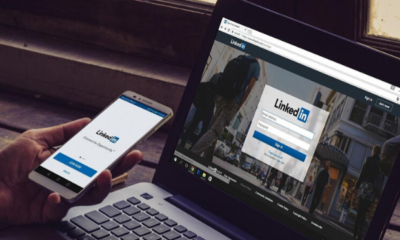Success Advice
How to Become an Influencer in 2020

If you’ve ever wondered how to become an influencer, you aren’t alone. Influencer marketing is on the rise as consumers and social personalities can now get paid to review brands to their audiences, promote glamorous lifestyles, and receive free products and services, including the luxury of complete wardrobes and travel accommodations.
Millennials and GenZ rely on these everyday people to provide valuable information within their realm of expertise. Companies are increasingly setting budgets aside to capitalize on this growing field of marketing. In 2017, over $2.1 billion was spent on influencer marketing on Instagram alone. The demand for social media influencers is anticipated to increase, especially for micro-influencers with less than 100k followers.
Influencers are the credible voice of this generation. Although everyday people, these consumers have positioned themselves as experts in their respective industries, earning the trust and attention of hundreds of thousands of follows, followed by contracts that pay real money.
As an influencer, you can use your voice to share information relevant to your passions or help your peers with purchasing decisions by reviewing products. While it may look like glitz and glamour from the outside, influencers can attest that they are required to be “on” 24/7 to cater to their brands, promotions, and audiences.
Inevitably, more people are looking to explore the world of influencer marketing. Despite the glamour, influencers are free agents who must create content that is both intellectually and aesthetically pleasing. They perfect the process of publishing and promoting content online and learn how to monetize their content. While the role is creative, it is also data-focused. As consumers grow more selective about who they follow, it is impertinent that influencers provide value, remain authentic, and indulge in the continuous task of having a robust and engaged following.
“A brand is the set of expectations, memories, stories and relationships that, taken together, account for a consumer’s decision to choose one product or service over another.” – Seth Godin
So how do you become an influencer in 2020?
First, define your brand, niche, and audience. Your brand should have a unique, consistent voice that reveals to the audience what you want them to know about you. A successful influencer finds a niche, a subject in which they are an expert and are passionate about it. Journalists and thought leaders in a variety of industries have successfully crossed over into influencer marketing by consistently providing valuable information in their niche. Your brand should speak to who you want to appeal to.
Next, choose your social media channel and develop your content strategy. Your voice should reflect the sponsorships you hope to receive, even in the beginning. Consider blogging, guest posts, and curating content from other thought leaders and similar accounts when developing your content strategy.
For influencers hoping to build an audience using career, job, or academic-focused content, LinkedIn would be a great platform. For influencers seeking to post a video or photo-based content such as tutorials, sponsored endorsements, or other content that might relate to a brand or product in a variety of industries, Instagram would be the platform of choice.
Now, you must organize your content so that it is published efficiently. Content scheduling allows you to schedule ahead and prepare in case of unexpected distractions. Your content schedule should have a month’s worth of pre-planned content; a content calendar can ensure your content is consistent and also track your performance and engagement.
“Numbers are hollow. It’s all about community and involvement” – Andrew Steinthal
What’s the best time to post on social media?
Have you ever wondered the best times to post on each social media platform? The answer varies with every social network and the type of audience being engaged. According to an article on the best time to post, “Facebook and Twitter both see high engagement at 9 a.m., whereas one of the best times to post on Instagram is 5 p.m. LinkedIn caters to B2B audiences, with an ideal posting time of 10 a.m. to 12 p.m.
Pinterest sees high engagement as late as 4 a.m. With many businesses facing a growing global audience, varying time zones have become a growing concern, especially when it comes to the best times to post.
After you’ve created your schedule, it’s time to focus on your followers. Find 50 similar accounts and make them your besties! Get from behind your device and make friends face-to-face. You can host and attend events, or even take a social media class to apply to your new platform. It also helps to learn how to pitch yourself, your metrics, website visitors, and engagements effectively to companies you’d like to pay you for your social media posts.
Speak at conferences, be a guest on a podcast, and position yourself as a thought leader in your industry. Just keep in mind that it takes time to see success from influencer marketing, as most influencers report months or sometimes even years of hard work before landing contracts. You must be willing to build relationships over time, and not just digitally.
It’s easy to become an influencer as the entry barrier is very low. It’s not so easy to really become an expert in your field. This takes time. Niche down as much as possible, stay consistent and most importantly, have a great vision in place which can change this world for the better.
Have you ever thought about being an influencer? Share your thoughts on it below!
Life
10 Research-Backed Steps to Create Real Change This New Year
This New Year could finally be the one where you break old patterns and create real, lasting change.

Every New Year, we make plans and set goals, but often repeat old patterns. (more…)
Change Your Mindset
The Silent Skill That Makes People Respect You Instantly
What truly earns respect and why most people go about it the wrong way

Everybody craves respect but not everyone earns it. Some people believe that a title, years of experience, or a position of authority automatically entitles them to respect. (more…)
Entrepreneurs
The Essential Skills Every Entrepreneur Needs In 2026
Success in the digital age isn’t about luck. It’s about mastering the skills that separate dreamers from doers.

When I was 22 years old, I started my first side hustle as a ghostwriter. (more…)
Did You Know
The Success Patterns You Inherited (And Didn’t Notice)
Your family history may hold the key to why you think, act, and feel the way you do today.

Who are you? Your experiences and your family’s narratives and legacies contribute to your identity. Your ancestry contains individual traits and forces that have been inherited over the years. It also carries the fights and victories of your forebears and older family members. (more…)
-

 Personal Development4 weeks ago
Personal Development4 weeks agoThis Silent Habit Might Be Sabotaging Your Career
-

 Business3 weeks ago
Business3 weeks agoWhy Your E-Commerce Fulfilment Is Probably Broken (And How to Fix It)
-

 Shift Your Mindset3 weeks ago
Shift Your Mindset3 weeks ago11 E’s That Define Every Great Leader And Why Most People Miss Them
-

 Did You Know2 weeks ago
Did You Know2 weeks agoThe Success Patterns You Inherited (And Didn’t Notice)
-

 Business3 weeks ago
Business3 weeks agoThe Hidden Money Pit in Your Operations (and How to Use It)
-

 Entrepreneurs2 weeks ago
Entrepreneurs2 weeks agoThe Essential Skills Every Entrepreneur Needs In 2026
-

 Change Your Mindset1 week ago
Change Your Mindset1 week agoHow to Turn Your Mind Into Your Greatest Asset (Instead of Your Enemy)
-

 Change Your Mindset6 days ago
Change Your Mindset6 days agoThe Silent Skill That Makes People Respect You Instantly


























